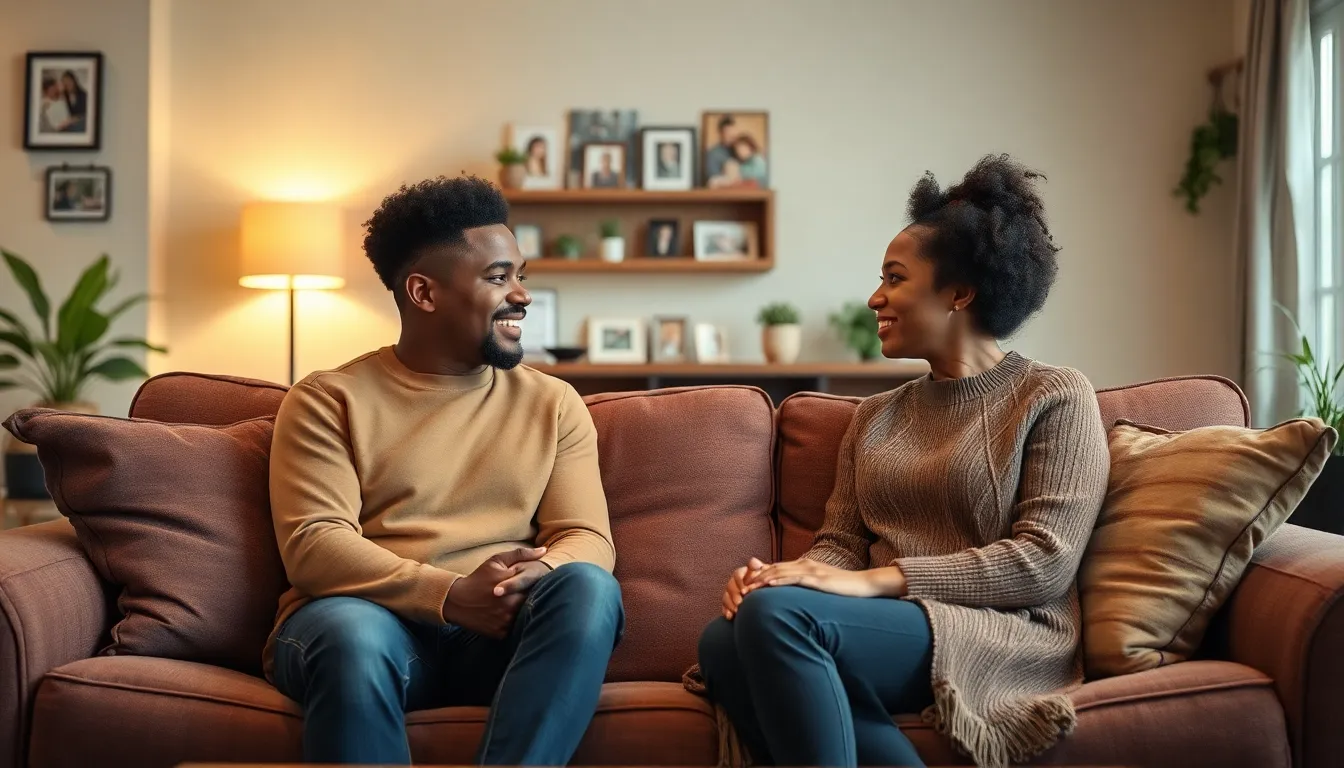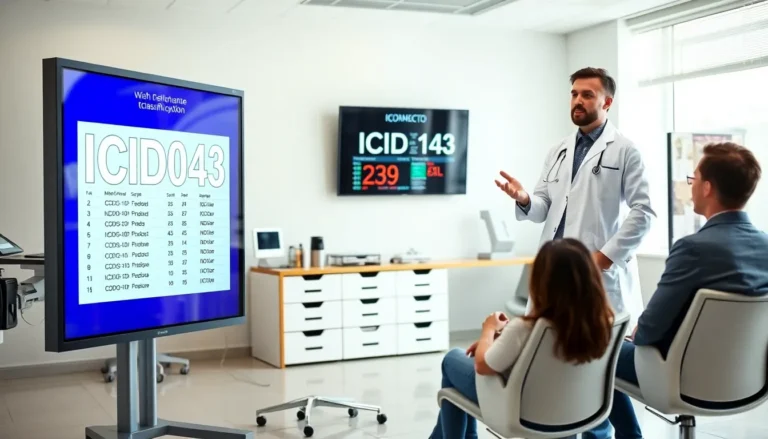Table of Contents
ToggleRelationships can be as tricky as trying to fold a fitted sheet—everyone knows it’s possible but few can master it. When conflicts arise, it’s easy to feel overwhelmed and unsure of how to navigate the stormy waters. But fear not! With the right problem-solving techniques, couples can turn those turbulent moments into opportunities for growth and connection.
Importance Of Relationship Problem-Solving Techniques
Effective problem-solving techniques play a crucial role in maintaining healthy relationships. They provide couples with the tools to address conflicts constructively. Strong communication fosters openness, encouraging partners to express their feelings and needs. Enhanced understanding leads to mutual respect and deeper emotional connections.
Demonstrating empathy helps partners navigate disagreements. Understanding each other’s perspectives facilitates resolution, making conflicts less daunting. Utilizing these techniques allows couples to view challenges as opportunities for growth. Couples can strengthen their bond by tackling issues together.
Focusing on collaborative solutions reduces tension and fosters teamwork. Couples learn to prioritize shared goals, making compromises that benefit both partners. Practicing active listening ensures that each person feels heard and valued. When partners validate each other’s experiences, they lay the foundation for trust.
Conflict resolution strategies also contribute to emotional well-being. Couples who manage disputes constructively report higher relationship satisfaction levels. These skills lead to stronger connections that withstand future challenges. Familiarity with problem-solving techniques helps couples anticipate and address potential conflicts before they escalate.
In stressful situations, couples equipped with problem-solving techniques experience decreased anxiety. They approach issues with a sense of control, leading to healthier outcomes. Relationships thrive when partners commit to ongoing personal and relational development. Recognizing the importance of these techniques ensures couples remain resilient against adversity.
Common Relationship Issues

Miscommunication often poses significant challenges in relationships. Misunderstandings frequently arise due to differences in communication styles. Partners might assume they understand one another’s intentions, leading to conflicts. Clarifying messages can prevent escalation and promote understanding. Active listening plays a crucial role in ensuring both partners feel heard. Taking time to express feelings clearly also minimizes the chance of confusion. Couples benefit from repeating back what they hear to confirm comprehension. This reinforcement strengthens connection and reduces future miscommunication.
Trust issues can undermine the foundation of any relationship. They often stem from past experiences or breaches of confidence. Building trust requires consistent honesty and transparency from both partners. Sharing vulnerabilities fosters a sense of safety and strengthens bonds. Addressing insecurities openly can reduce feelings of jealousy or doubt. Establishing boundaries contributes to mutual respect and understanding. Acknowledging mistakes and working towards forgiveness also aids in rebuilding trust. Practicing reassurance and expressing commitment can create a more secure environment, nurturing a supportive relationship.
Effective Problem-Solving Techniques
Couples can navigate conflicts more effectively by using proven problem-solving techniques that enhance communication and foster connection. These strategies allow partners to turn challenges into opportunities for growth.
Active Listening
Active listening involves fully focusing on what the other person says. This technique promotes understanding and validation of each partner’s feelings. When couples practice active listening, they can avoid misunderstandings and create space for open dialogue. Paraphrasing the speaker’s words demonstrates engagement. Asking clarifying questions ensures that both partners are on the same page. By prioritizing active listening, couples reduce defensiveness and promote emotional safety in conversations.
Collaborative Communication
Collaborative communication emphasizes a team approach to resolving conflicts. Couples can express their thoughts and feelings honestly while striving to solve problems together. Keeping an open mind encourages creativity in finding solutions that satisfy both partners. Utilizing “I” statements instead of “you” accusations fosters a non-confrontational atmosphere. This technique not only allows for respectful exchanges but also reinforces the connection between partners. Prioritizing collaboration leads to mutual respect and shared understanding, enhancing relationship satisfaction.
Compromise and Negotiation
Compromise and negotiation involve finding a middle ground where both partners feel valued. They require flexibility and willingness to give and take. Establishing clear priorities helps couples identify which issues are most important to them. By discussing individual needs and desires, partners can work towards solutions that accommodate both sides. Practicing negotiation can prevent feelings of resentment from building. This approach nurtures a sense of teamwork, fostering deeper emotional connection as couples navigate conflicts together.
Practical Steps To Implement Techniques
Implementing effective problem-solving techniques in relationships requires intentional actions. Couples can create an atmosphere conducive to open communication and understanding.
Setting the Right Environment
Choosing the right environment for discussions fosters productive communication. Couples should find a quiet, comfortable space away from distractions. Privacy helps partners feel safe and open to sharing their feelings. Being physically comfortable can improve mood and reduce tension. A calm setting encourages patience, allowing time for thoughtful responses. Establishing ground rules, such as no interruptions, ensures fairness in communication. These elements create a foundation for constructive dialogue, empowering couples to address their issues effectively.
Utilizing “I” Statements
Using “I” statements is vital for minimizing defensiveness during conversations. These statements help express feelings without blaming the other person. For instance, saying “I feel hurt when you don’t listen” conveys a personal experience rather than placing blame. This approach promotes self-awareness and responsibility for feelings. Additionally, “I” statements encourage partners to understand each other’s perspectives better. By focusing on personal feelings, couples can foster a supportive atmosphere where both partners feel heard. Practicing this technique enhances empathy and communication, ultimately strengthening their relationship.
Navigating relationship challenges doesn’t have to feel overwhelming. By embracing effective problem-solving techniques couples can turn conflicts into opportunities for growth. Strong communication and empathy play vital roles in fostering deeper connections.
When partners actively listen and express their feelings using “I” statements they create a safe space for dialogue. This approach not only minimizes defensiveness but also encourages mutual understanding.
Establishing trust through honesty and transparency further enhances the relationship. As couples commit to these strategies they’ll find themselves better equipped to face challenges together. Ultimately these techniques pave the way for healthier relationships filled with respect and emotional satisfaction.







